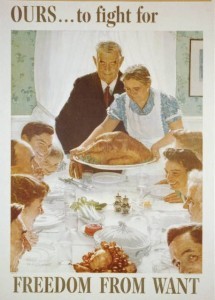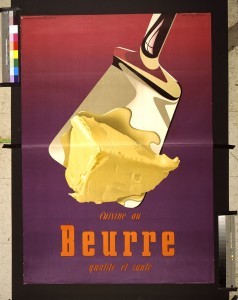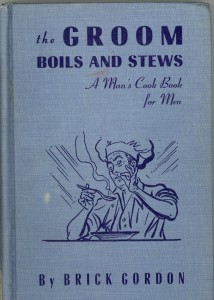Serving Up Food Collections
(The following story, written by Library culinary specialist Alison Kelly, is featured in the November/December 2015 issue of the Library of Congress Magazine, LCM. You can read the issue in its entirety here.)

Painter Norman Rockwell’s “Freedom from Want,” Office of War Information poster, 1943. Prints and Photographs Division.
The Nation’s Library offers a veritable feat of food-related collections.
Whether you’re researching what was served at the Pilgrims’ first Thanksgiving or tracing the history of genetically modified foods, you can find it in the Library of Congress.
The topic of food—interdisciplinary in nature and woven into many aspects of our lives—is well-represented in the Library’s extensive collections of cookbooks, scholarly works, journals, pamphlets, posters and bibliographies on food history. Researchers can also consult the Library’s primary-source materials— from anonymous diaries to presidential papers.
Cookbooks are an invaluable resource for food history. They offer clues about markets, agriculture, nutrition, regional and cultural differences, immigration, technological change and more. Some of the world’s outstanding cookbooks and other works on gastronomy—from the 15th through the 19th centuries—came to the Library in the early 1940s when Arvill Wayne Bitting donated the 4,346-volume collection assembled by his wife, Katherine Golden Bitting (1868-1937), a food chemist for the Department of Agriculture and the American Canners Association. The Library’s cookbook collections range from Maestro Martino’s handwritten 15th-century manuscript (“Libro de arte coquinaria”) in the Bitting collection to contemporary full-color works like “Modernist Cuisine” (2011) and “Cambridge World History of Food” (2014).

Advertising poster for butter, Donald Brun, 1951. Prints and Photographs Division.
American cooking is a special strength of the Library’s collections. Titles include “American Cookery” (1796) by Amelia Simmons. Considered to be the first truly American cookbook, the volume is notable for recipes that included native American ingredients such as molasses, pumpkin and cornmeal. Simmons’ “Pompkin Pudding” baked in a crust is the basis for the American classic, pumpkin pie.
Numerous influential American cookbooks followed—from Lydia Maria Francis Child’s “The Frugal Housewife” (1829) to Irma Rombauer’s “Joy of Cooking,” published in 1931 and followed by six editions.
Many of the Library’s cookbooks have regional focus, with specialized recipes from New England, the American Southwest, the Great Lakes and, of course, the South. An example is one of the first published works on cooking by an African-American author, “What Mrs. Fisher Knows about Old Southern Cooking, Soups, Pickles, Preserves, etc.” (1881) by Abby Fisher.
Many regional cookbooks have been used to raise funds for local schools, churches or women’s clubs. The community cookbooks comprise a portion of the Library’s food holdings.
Wartime cookbooks could be their own genre. “The Confederate Receipt Book: a compilation of over one hundred receipts adapted to the times” (Richmond, 1863), was the only cookbook published in the South during the Civil War. Cookbooks published during the first and second World Wars encouraged homemakers to do their part in contributing to the war effort on the home front by stretching their budget with recipes such as mock sausage.
 Coca-Cola Company’s entire collection of historic television commercials dating to 1950. The national and international advertisements reveal much about world cultures—and their eating and drinking habits— over the past five decades.
Coca-Cola Company’s entire collection of historic television commercials dating to 1950. The national and international advertisements reveal much about world cultures—and their eating and drinking habits— over the past five decades.Over the past decade, many culinary experts have spoken at the Library on topics ranging from Somali, Turkish, Egyptian and Pan-African cuisine to the fortune cookie. Many notable chefs have spoken at the Library’s National Book Festival. These presentations can be viewed on the Library’s website or its YouTube channel.
Library of Congress's Blog
- Library of Congress's profile
- 74 followers



